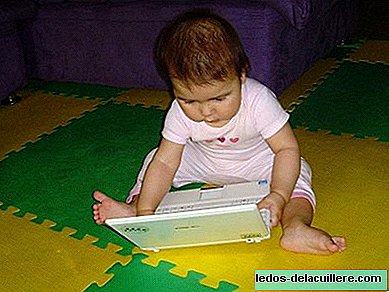
There is a widespread idea that children will read more if they have a device such as an iPad or a Kindle, but new research reveals that it doesn't have to be the case.
In a study among children aged 10 to 12, those who had regular access to devices with the ability to read e-books (such as Kindles, iPads and mobile phones) they didn't use the devices to read, even if they were children who read daily. The research also revealed that the more devices available to the child, the less he read in general.
This suggests that providing children with devices where they can read e-books can inhibit their reading in general and that paper books are still the favorites of the youngest.
These findings corroborate the results of a previous investigation that analyzed the way in which adolescents preferred to read. This research concluded that while some students enjoyed reading books on devices, the majority who had access to these technologies did not normally use them for that purpose. Most important of all, the most avid book readers did not usually read books on screens.
Why do we think children prefer to read on screens?

There is a popular opinion that young people prefer to read on screens instead of paper, an idea partly driven by education writer Marc Prensky when in 2001 he coined the term "digital natives" to refer to young people who have a Good knowledge of digital media and that universally prefer reading on devices.
But not all young people have the same digital capabilities and science does not support this claim that they prefer screens.
Despite this, the myth has already had an impact on decisions now to choose the sources of books in schools and public libraries in Australia and the US, where some libraries have chosen to remove all their books in paper for the alleged preference for electronic books.
What libraries are doing with this measure is to limit the access of young people to their favorite way of reading, something that could have a detrimental effect on their reading frequency.
Young people increasingly have access to devices thanks to programs promoted by schools and parents face aggressive marketing campaigns to keep up with educational technologies at home.
Schools are encouraged to increase the use of devices and in the case of Australia, for example, information technology and communication technologies are the main skills to be demonstrated in all subjects.
The arguments in favor of reading on devices are solid, but not well founded.Why do students usually prefer to read books on paper?
Reading on devices through an application leads to more distractions because they allow the user to change applications easily.
For those students who already have attention problems, the immediate reward of playing a video game can easily outweigh the long-term benefits of reading.
Digital literacy can also be a problem because in order to use a device to read books children have to learn to use these devices.
They need to know how to access free reading material legally through applications such as Overdrive or websites such as the Gutenburg Project.
Tips to encourage your child to read

Scientific studies reveal that reading books is a more effective way to improve and maintain the level of literacy than simply reading other types of text. However, international research suggests that young people read fewer and fewer books.
Simply giving children devices where they can read e-books is not going to encourage them to read, but there are several strategies supported by research They can help encourage children to pick up a book.
Such strategies include:
- Let them see that you enjoy reading. This study concluded that several students did not know if their language teachers liked to read. Those professors who demonstrated their fondness for reading inspired some students to read more and to be interested in a wider spectrum of books.
- Create (and use frequently) spaces for reading at home and in schools. The noise, poor lighting and many distractions can make the reading experience not pleasant and we end up getting frustrated.
- Encourage silent reading Normally, books at school and at home. Giving children time to read at school not only makes them adopt a reading routine, but it can also be an opportunity for the child to read books he has chosen for himself for his enjoyment.
- Both teachers and parents should talk about books, sharing ideas and recommendations.
- Be sure to encourage your child and your students to read for pleasure. Although we know that children tend to distance themselves from books over time, sometimes it may be due to a lack of support when they start reading on their own. This makes children mistakenly believe that reading is no longer important, no matter how important it is to improve and maintain the level of literacy in both children and adults.
- Discover what your child likes to read and facilitates your access to books at school and at home.
Authors: Margaret Kristin Merga, Professor and Researcher in Teenage Literacy, Health Promotion and Education, Murdoch University and Saiyidi Mat Roni, Professor at Edith Cowan University
This article has originally been published in The Conversation. You can read the original article here.
Translated by Silvestre Urbón.












